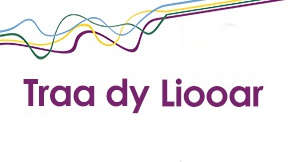
Ta earrooyn soilshaghey tuittym sy raayt-ruggyree
Ta staddyssaght voostagh er hoilshaghey tuittym jeh ny shlee na queig as feed sy cheead ayns raayt-ruggyree yn Ellan neayr's feed cheead as jeih.
Ughtar Atlas Phobble Vannin, Paul Craine, t'eh gra dy jean y tuittym tappee jannoo dy mooar er y cherroo-mynchreck, ro-scoillyn, scoillyn as y margey-faillee.
Gaase yn earroo dy leih ta gobbraghey harrish ny queig bleeaney ta ry-heet, shen ard-dean ec y reiltys - ta'n reiltys gra dy vel aase tarmaynagh croghey er shen.
She shey kiare feed as tree thousane as nuy cheead (83,900) yn earroo dy leih ayns Mannin ec y traa t'ayn.
Shen beggan ny sloo na'n earroo va currit magh sy choontey-pobble jerrinagh - kiare feed as kiare thousane, kiare cheead, kiare feed as nuy-jeig (84,497).
Ta Mnr Craine gra dy vel y tuittym sy raayt-ruggyree soilshaghey paart dy chooishyn mooarey.
Figures expose birth rate deciine
Startling statistics have shown a decline of more than 25% in the Island's birth rate since 2010.
Author of the Manx Population Atlas, Paul Craine, says the rapid decline will have significant consequences for the retail sector, nurseries, schools and the employment market.
Growing the working population over the next five years is a key aim of the government, which says that economic growth depends on that.
The Island's population is currently put at 83,900 - that's a slight fall on the number published in the last census, 84,497.
Mr Craine says the drop in the birth rate exposes some major issues.


 Traa dy Liooar, 7 Mee Averil - 2025 - April 7th
Traa dy Liooar, 7 Mee Averil - 2025 - April 7th
